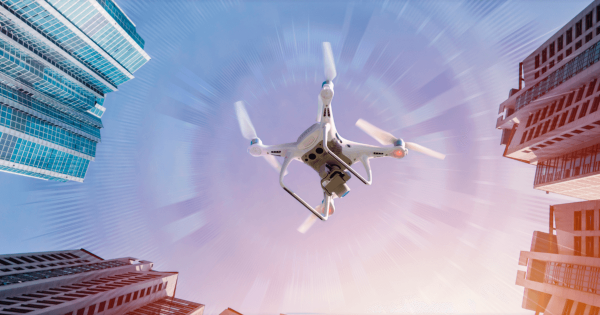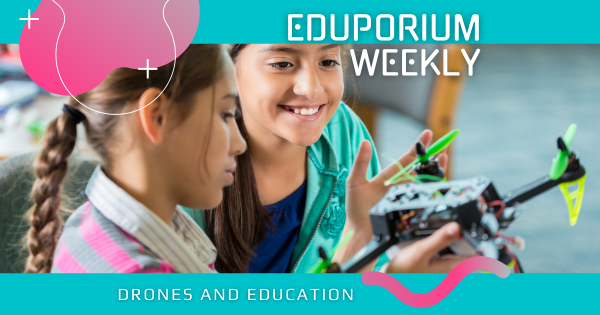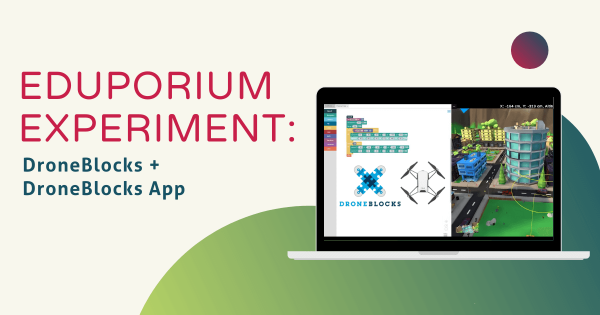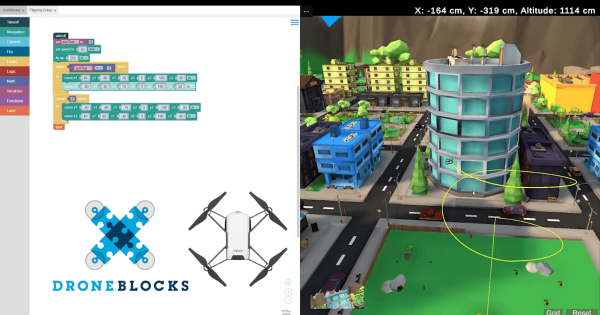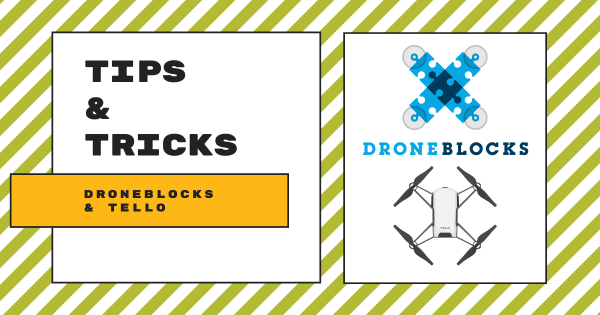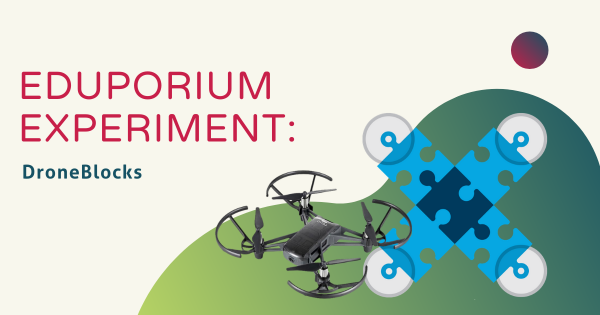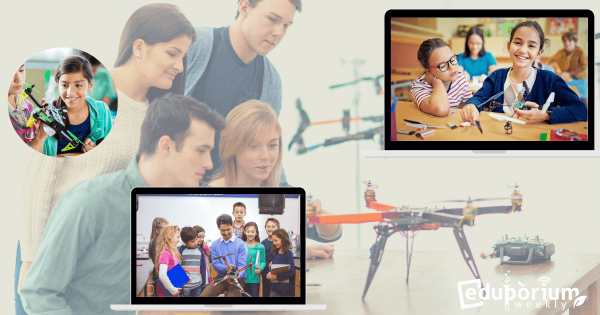A part of medicine, agriculture, research, and more, drones are increasingly prevalent in a wide range of fields. Therefore, it’s more necessary than ever to integrate them into STEAM education. Using these five options, children can combine drone piloting with coding, engineering, and design. They will build obstacle courses, code choreography, and have fun with STEM!
DroneBlocks
DroneBlocks is a pioneering STEAM curriculum, standing at the forefront of technological innovation and integrating drone technology in the classroom. The curriculum introduces kids to the exciting world of drones and illustrates their real-world potential while they explore STEM connections. The primary value of the DroneBlocks curriculum lies in its hands-on and interactive approach to learning. Through this series of progressing lessons, students gain a deeper understanding of coding, computational thinking, and problem solving as they program a Tello EDU drone. The Tello EDU from DJI serves as the ideal companion, offering a safe and programmable platform for kids to experiment with applying real-world STEM principles. Lessons cover topics from basic coding to mission planning. Kids can use a visual interface to create code blocks, making it accessible to those without prior coding experience.
As they progress, children can delve into more complex coding, allowing for a scaffolded learning experience that accommodates diverse learners. The real-world applications of DroneBlocks in STEAM education are vast. Students can engage in activities like designing autonomous flight paths, collecting data through sensors, and solving critical thinking challenges. The Tello EDU and its capabilities, combined with this structured curriculum, help make it a powerful platform for educators aiming to cultivate essential STEM skills among their students. DroneBlocks is also an invaluable system across STEAM education, providing a comprehensive curriculum for putting drone technology in students' hands. By integrating theory with hands-on applications, the curriculum prepares students for future challenges while fostering a passion for STEM subjects.
-
Eduporium Weekly | Drones And Education
What started out as a cool and unique chance for students to develop key skills while trying out new technology has grown into a legitimate teaching and learning approach. Now, with applications in all sorts of today’s STEM and CTE disciplines, educators are discovering how teaching with various drones can help prepare students for the future in a variety of -
Eduporium Experiment | The DroneBlocks App
With the DroneBlocks app and curriculum, students can program the flight paths and movements of the Tello EDU using simplistic drag-and-drop blocks. They could also utilize DroneBlocks for programming some of the more advanced DJI drones, like the Phantom 3, Phantom 4, Mavic Pro, Mavic Air, and the regular Tello drone. Read on to learn more! -
The New DroneBlocks Simulator and DroneBlocks Code
One very exciting update to the DroneBlocks curriculum offerings is the virtual coding simulator. Using this web-based platform, students can create block coding programs for the Tello EDU drone and control its maneuvers as it navigates a virtual but realistic environment. And, not to be outdone, the DroneBlocks Code platform is optimized for JavaScript. -
Tips & Tricks | DroneBlocks and Tello EDU
With DroneBlocks, STEM educators can build on student interest in flying drones and take it further with drones they can program! DroneBlocks is a free app that is compatible with Chrome, iPad, and Android devices and provides educators with great professional development tools and resources for helping them maximize their drone and coding instruction. -
Eduporium Experiment | DroneBlocks Memberships
Teaching students about drones, their uses, and how to pilot them is amazing in its own right. When you incorporate the fact that some drones, like the Tello EDU, are programmable, then it takes drone education to a whole new level and the DroneBlocks professional learning content is a great way to get started. -
Eduporium Weekly | Flying High with Drones in Education
Whatever is the latest piece of technology adapted for the classroom, we’re working to sell teachers, schools and districts on the importance of making sure their students have access to it. Next up on the long list of innovative EdTech? Drones. When it comes to tapping and ballooning student creativity with technology, drones are certainly exciting options.




